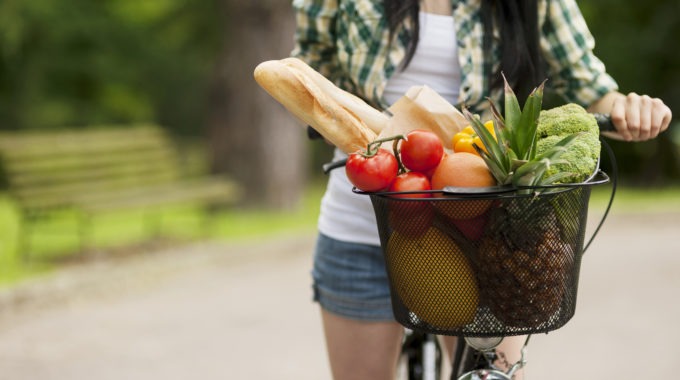The other fuel: food = emissions, too
If you’ve been trying to walk and ride your bike more rather than drive, this is certainly a great way to do your bit towards reducing greenhouse gas emissions by using less fuel in your car, but researchers from the University of Otago, New Zealand, say we also need to think about how we fuel our bodies to do that walking and cycling.
In a paper published in the international journal Scientific Reports, the researchers point out that people who shift from passive modes of transport – such as driving – to active modes like walking will ultimately have higher energy needs, which could lead to an increase in food production-related emissions.
The researchers estimate that the additional energy expenditure required for a person to travel one kilometre ranged from 48 to 76 calories for walking and 25 to 40 calories for cycling. Those extra calories need to come from somewhere. Lead researcher Dr Anja Mizdrak says producing the food required to fuel walking and cycling does come at a cost.
“We have a conundrum – but a solvable one,” she says. “To maximise the benefit on greenhouse gas emissions achieved by increasing active transport, we need to also address dietary patterns. Emissions associated with active transport will be lower if walking and cycling are powered by low-carbon dietary options.”

Active transport like cycling certainly has many advantages, including more pleasant urban living, reduced air pollution and a reduction in chronic diseases like cancer and heart disease. But if we really want to make the most of our new, healthier active lifestyles, we need to consider what we’re eating – both for the benefit of our bodies and for the planet. So, what should we be fuelling our bodies with?
Dr Cristina Cleghorn, co-author of the research paper, says reducing meat consumption and shifting diets away from processed food and towards more vegetables, legumes, whole grains and fruits are likely to have both health and environmental co-benefits.
“Given emissions associated with different food groups range widely – from 0.02 for legumes to 5.6 grams C02-equivalents per calorie for beef and lamb, consumers switching to foods with lower emissions could reduce overall dietary emissions by up to 80 percent.
“In order to reduce greenhouse gas emissions, we need to encourage changes in what we eat, as well as how we travel.”









